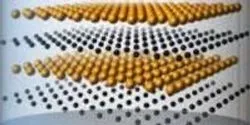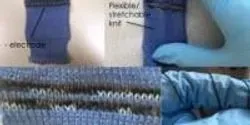Materials Science

Researchers have fine-tuned a technique for coating gold nanorods with silica shells, allowing engineers to create large quantities of the nanorods and giving them more control over the thickness of the shell. Gold nanorods are being investigated for use in a wide variety of biomedical applications, and this advance paves the way for more stable gold nanorods and for chemically functionalizing the surface of the shells.

Drexel University researchers, along with colleagues at Aix-Marseille University in France, have discovered a high performance cathode material with great promise for use in next generation lithium-sulfur batteries that could one day be used to power mobile devices and electric cars.

Graphene, a strong, lightweight carbon honeycombed structure that’s only one atom thick, holds great promise for energy research and development. Recently scientists with the Fluid Interface Reactions, Structures, and Transport (FIRST) Energy Frontier Research Center (EFRC), led by the US Department of Energy’s Oak Ridge National Laboratory, revealed graphene can serve as a proton-selective permeable membrane, providing a new basis for streamlined and more efficient energy technologies such as improved fuel cells.

Cod liver oil and willow bark extract used in the tanning of skins for clothing and other products offer notable differences in treatment, a study by a team of scientists shows. Their findings show the promise of a technique that may be used to identify the aging behavior of materials and to examine delicate works of art.

The field of metamaterials is all about making structures that have physical properties that aren’t found in nature. Predicting what kinds of structures would have those traits is one challenge; physically fabricating them is quite another, as they often require precise arrangement of constituent materials on the smallest scales.

A new simple tool developed by nanoengineers at the University of California, San Diego, is opening the door to an era when anyone will be able to build sensors, anywhere, including physicians in the clinic, patients in their home and soldiers in the field. The team from the University of California, San Diego, developed high-tech bio-inks that react with several chemicals, including glucose. They filled off-the-shelf ballpoint pens with the inks and were able to draw sensors to measure glucose directly on the skin and sensors to measure pollution on leaves.

University of British Columbia researchers have found a new way to make state-of-the-art materials for energy storage using a cheap lamp from the hardware store

Trapping carbon dioxide (CO2) emissions from power plants and various industries could play a significant role in reducing greenhouse gas emissions in the future. But current materials that can collect CO2—from smokestacks, for example—have low capacities or require very high temperatures to work.

Engineers at the University of Texas at Dallas have created semiconductor technology that could make night vision and thermal imaging affordable for everyday use.











